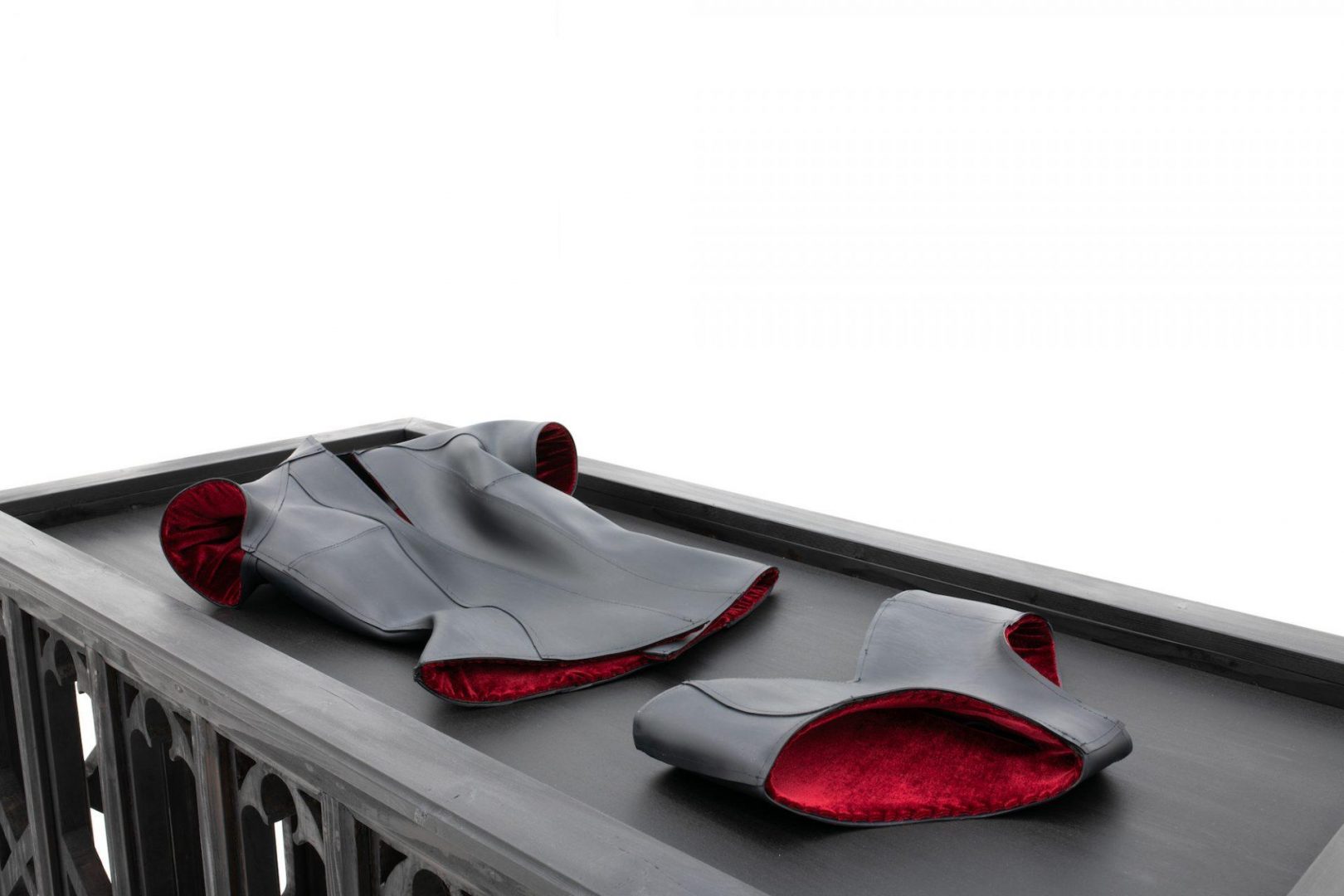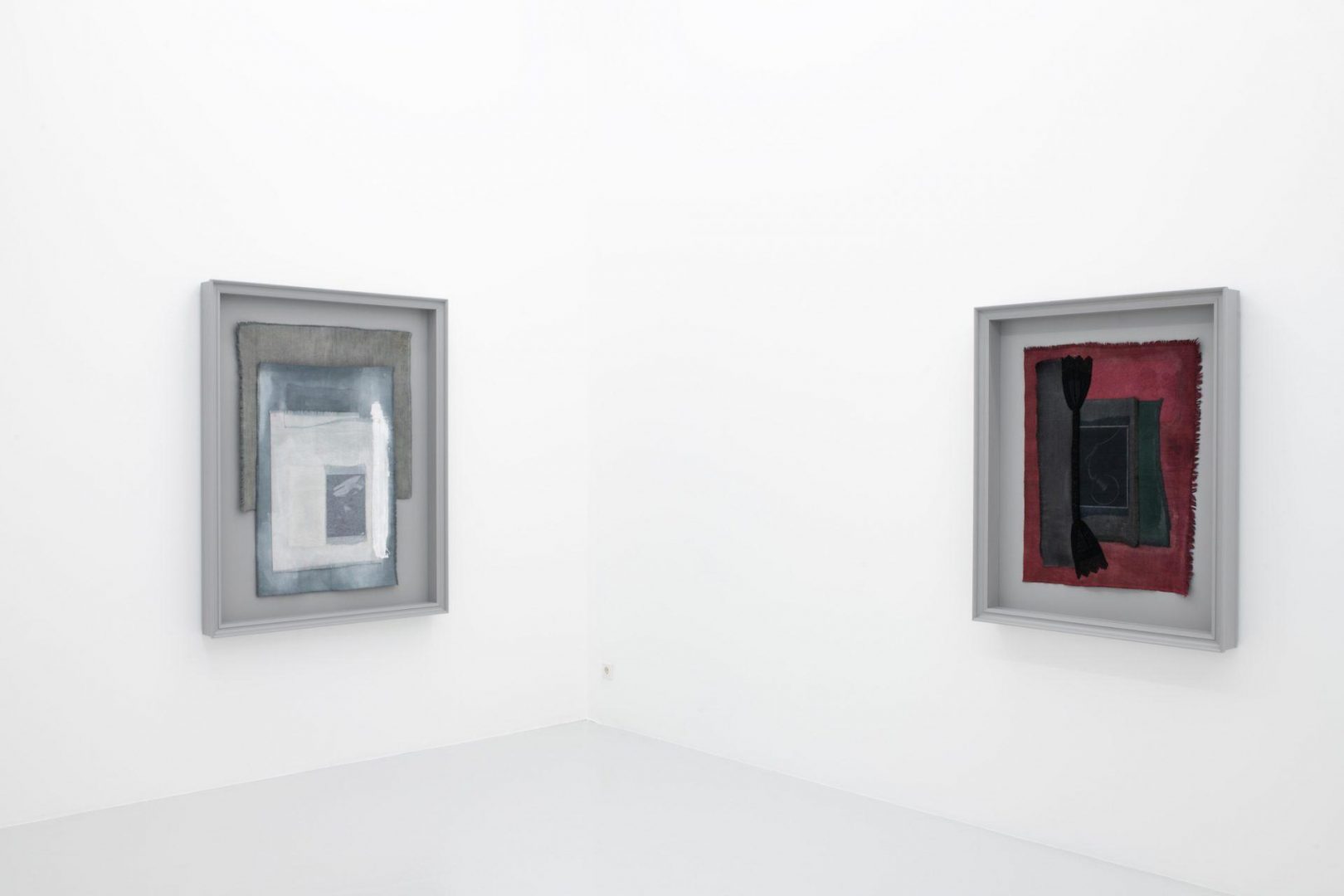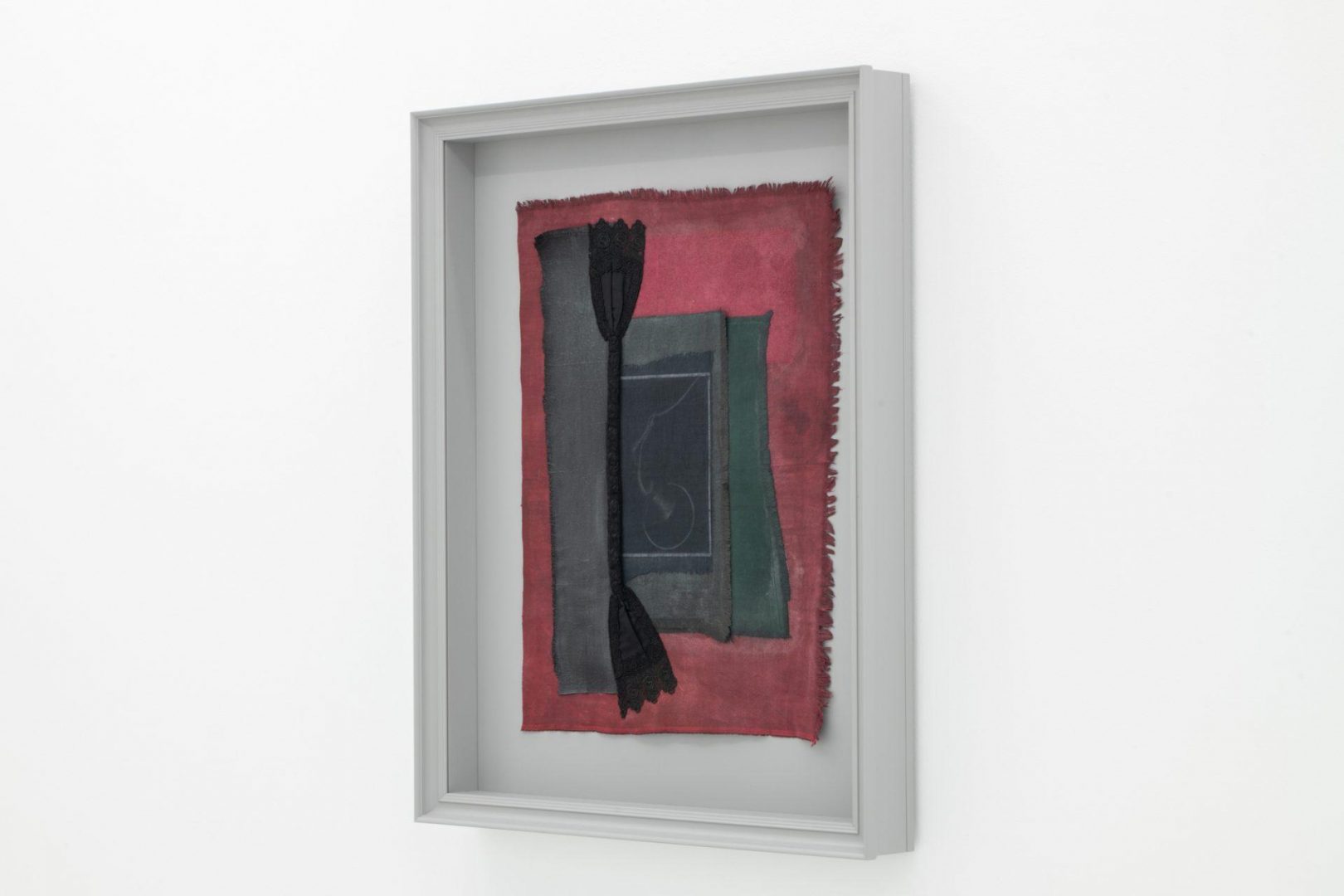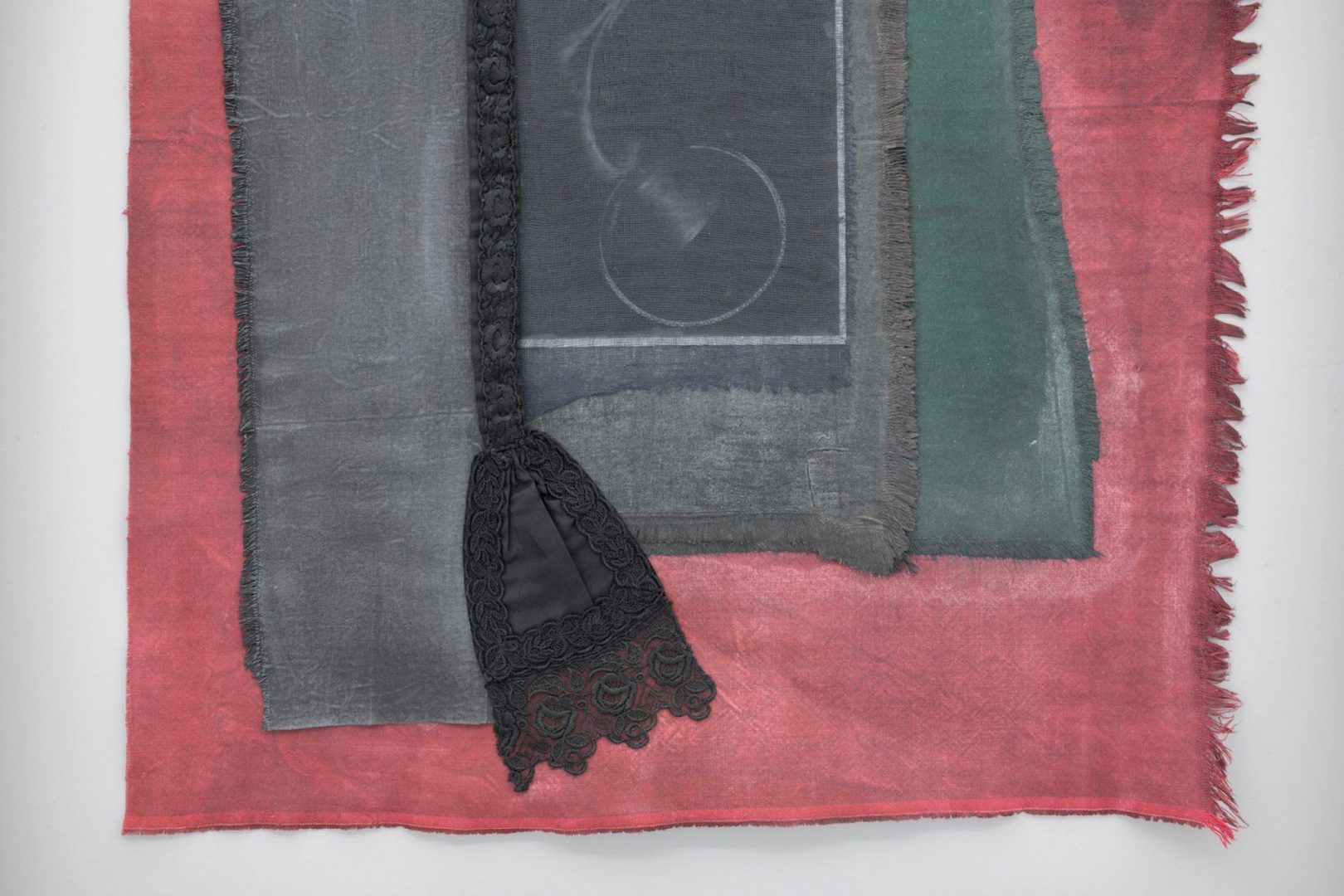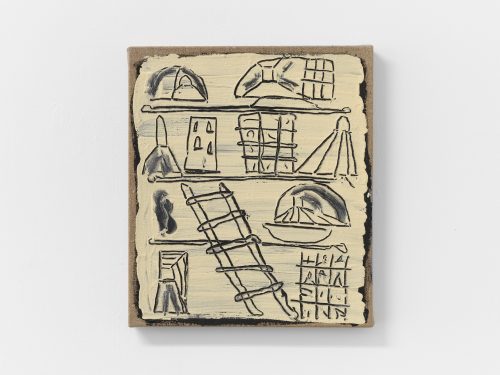
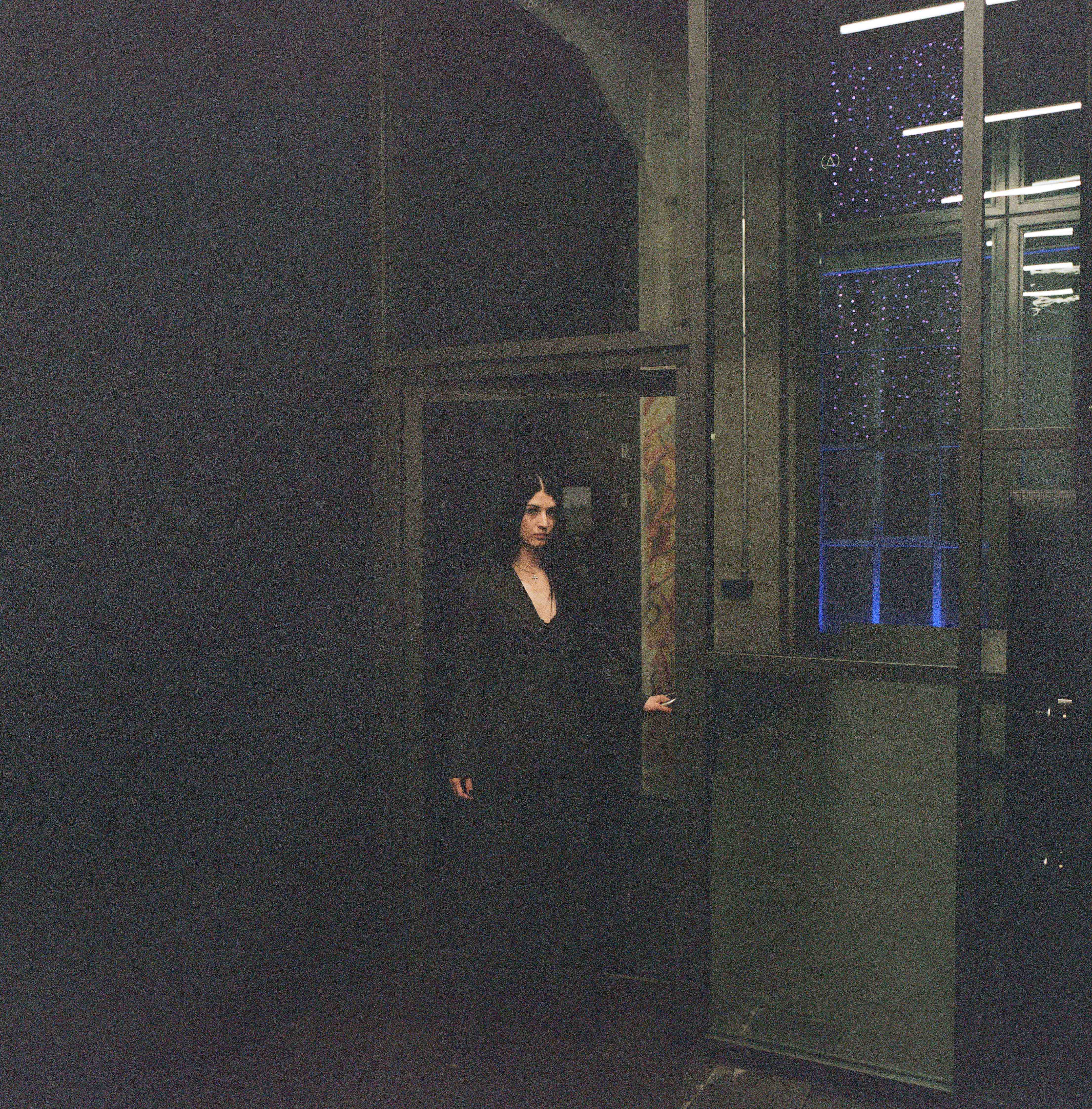
INTERVIEW WITH ELIZA BALLESTEROS & THERESA WEISE
Project Info
- 🖤 Eliza Ballesteros
- 💙 fiebach, minninger
- 💛 Nils Amadeus Lange (Titel Picture)
- 💜 Theresa Weise
Share on
Eliza Ballesteros reframes and reinterprets cultural symbols and materials to challenge societal power structures and norms, meticulously crafting stage-like settings. Her art is a continuous exploration and negotiation of themes including tradition, power dynamics, interpretive sovereignties, sinister fetishes and gender norms. The solo exhibition “ALCOVES OF WEEP” at fiebach, minninger in Cologne displays a new series of works, which were created during her residency at Sihl Delta in Zurich and showcase a transformation of her practice. Art historian and writer Theresa Weise spoke to the artist in her new studio at the Artist-Residency Schloss Balmoral.
TW For the first time you’re showing works produced during your Residency in Zürich. What does the title of the exhibition “ALCOVES OF WEEP” refer to?
EB An alcove is a niche or bed niche in classical houses typically used to display sculptures. This concept resonated with me because ongoing references to the domestic sphere are highly significant in my practice. At one moment of grief, I was walking through the Vienna subway system noticing large hallows where trash and dirt accumulate. And as I walked along the platform, I thought about how grief also accumulates in these hidden places. This realization filled me with hope, as it underscored the potential for these spaces to be cleansed. Coven profiles are the displays for the linen and paper that became a new medium I experimented with during my time in Zürich. In the first place I wanted to use the word “grief” within the title, but it’s such a strong word. When I googled “Trauerweide” which translates into english as “Weeping Willow”, it immediately clicked.
TW There is an object in the corner of the gallery which looks like a religious piece of furniture. Yet, its function seems to be very open to question to me. What exactly is it?
EB I find the intriguing aspect of this object to be its ambiguity. I stumbled upon it while browsing an antique dealer's collection online, initially in search of a lingerie display case. I envisioned creating a moment akin to a boutique experience for this outfit. However, to my surprise, it was listed as a wood storage, a classification that left me utterly perplexed. Why would someone craft such a beautiful piece solely for storing wood? This prompted me to contemplate the nature of this antique object. It seems to come from an era when items were crafted to be both aesthetically pleasing and durable, reflecting a bygone era. I also entertained the possibility that it might be a crib. This conjecture arises from its irregular and uneven structure, distinctly lacking the precision of a master carpenter's workmanship. Its enigmatic nature defies easy classification; it seems to oscillate in its identity within space. And therein lies its allure, continually captivating my fascination.
TW And the outfit on top of the object?
EB In Vienna, there is a wax anatomy museum affiliated with the university's medical faculty, the “Josephinum - Sammlung der Medizinischen Universität Wien”. There you can see remarkably lifelike anatomical models, each carefully arranged within their own petite cherry wood enclosures, delicately shrouded beneath pristine white fabric. It's presented very reverently, brutal and morbid, and for me, I imagine violent things emerging from it. At times, I find myself wandering off on tangents during my research, drawn to such macabre subjects. Following one such immersion, I felt a compelling urge to create a torso—a distinctly feminine form, perhaps even that of a youthful woman. This impulse is intertwined with notions of desire, lending the endeavor a palpable intensity. Whether tapping into pre-existing symbolic or societal charges, my aim is to imbue the object with new meaning as I revisit and engage with it.
TW Tell me more about the recurring objects in your work, such as the bell, the glove…
EB There are various objects swimming around in my practice, they keep popping up. I collect them, I devote myself to them. The bell, for example, is initially an obvious architectural element associated with a church. It serves as a symbol and emits its vibrations into space, spreading from there and, for example in a little version, helping cows not to get lost. I'm particularly interested in the bell as a symbol of power or sound body. If the cow didn't have an owner, it wouldn't need a bell.
TW Are new objects constantly being added?
EB Yes, lately it's a nail. My friend's father works in geotechnics and civil engineering. Nails are repeatedly pulled from very old rail systems. Things like that excite me in my practice. I work with what's available.
TW What is the potential in found objects?
EB I'm convinced that there's potential to redirect objects and symbols toward a different trajectory. This notion fills me with hope. Simultaneously, it relates to accessibility. Nearly everyone has encountered a bell; its influence is profound. I draw inspiration from this ubiquity. I find it remarkable that certain objects, like the rose, for instance, consistently offer enjoyment.
TW Do you manipulate objects?
EB For me, it's more about gestural appropriation than manipulation. I engage with found objects because they carry inherent significance and I work with these qualities.
TW Your recent works often involve scanning objects, adding the medium of paper to your practice. Yet, you consistently return to found objects. Tell me more about the scans in the exhibition.
EB With the scans, I am drawing inspiration from artists who influence my practice, such as Sigmar Polke or Pati Hill. I chose to scan objects from my collection because they lose their three-dimensionality in the process, yet the resulting scan still retains depth. This process allows me to bridge traditional elements like materials, craftsmanship, and artistic themes with a contemporary approach.
TW Does your practice follow a certain etiquette?
EB I hold myself to high standards, and as a result, I also hold my environment to high expectations. Consequently, I am sometimes perceived as strict and actually I am a compassionate and considered person. There is for sure a side of me that exhibits stringency, particularly towards my work.
TW Language is a very important tool for you. The site-specific works “Dare” (2021) in a parking garage in Düsseldorf comes to mind. The typography is applied to the wall in driveway marking paint, it becomes reflective when a cone of a car light hits the wall and the tiny glass beads break the light. So, how important is text in your work?
EB A considerable part of my artistic inspiration stems from linguistic sources. Even the insights I shared with you about the title at fiebach, minninger stem from reflections I've internalized, which find their expression through language and subsequently inform my decision-making process. I curate an ongoing archive where I gather aphorisms and quotes—words and phrases that resonate with me. This practice holds immense significance for me because by looking back at this, I am continuously reminded of the themes and ideas that have preoccupied my mind.
TW How did the French writer and philosopher Georges Bataille come into your work?
EB I think Bataille and I have many similarities in the fascinations we have. I love that he creates such absurd situations and images. In one of his books "The Story of the eye", there are two teenagers. It's about a game of leadership and attraction. The boy dips his naked bottom into a plate of milk because he wants her to do the same. It's such an absurd image to me, but it has a totally sensual quality.
TW And how do your and Bataille themes converge?
EB Through the idea of the Die Marter “Zereißprobe”, which actually comes from a biblical context. But Bataille describes it as a trial of being torn apart and an experience that takes place outside of any everyday situation and must be endured. It's about enduring rupture and self-loss and precisely at that moment encountering the sacred —it’s a transcendental experience. This means that there is transcendence in the pain. I think a lot of my work comes from a position of pain - as a very sublevel of the process. It's good and it's important to look where it hurts and where the pain is and to understand clearly what pain means. And whether it's a physical pain, like the first pain we feel when our teeth grow. You can't end it. Bataille somehow found a way to make that productive for himself and so did I.
Eliza Ballesteros (*1988) lives and works in Vienna and Düsseldorf. She graduated at Kunstakademie Düsseldorf in 2019 as a master student of Prof. Rita McBride. In 2021 she received the Förderpreis YOUNG ARTIST PUBLISH from the Stiftung Kunst und Kultur Bonn and Wienand Verlag Köln and had her first solo exhibition with fiebach, minninger. Ballesteros works have been shown among others at the Kunstsammlung NRW K21 (Düsseldorf 2020), Kunsthalle Düsseldorf (Düsseldorf 2021), Kunst im Tunnel KIT (Düsseldorf 2022), Simultanhalle (Cologne 2021), Westfälischer Kunstverein (Münster 2022) and at Duarte Sequeira Gallery (Braga 2023/24). Ballesteros describes herself as a sculptural conceptual artist, dealing with objects, texts and installation.
Theresa Weise is an art historian, author, and editor.

